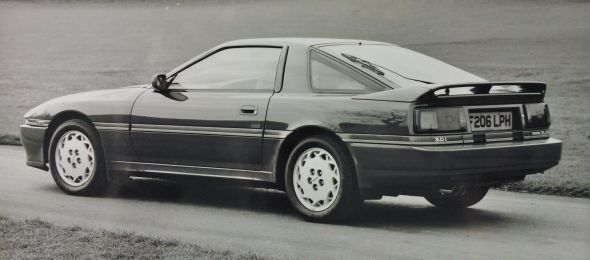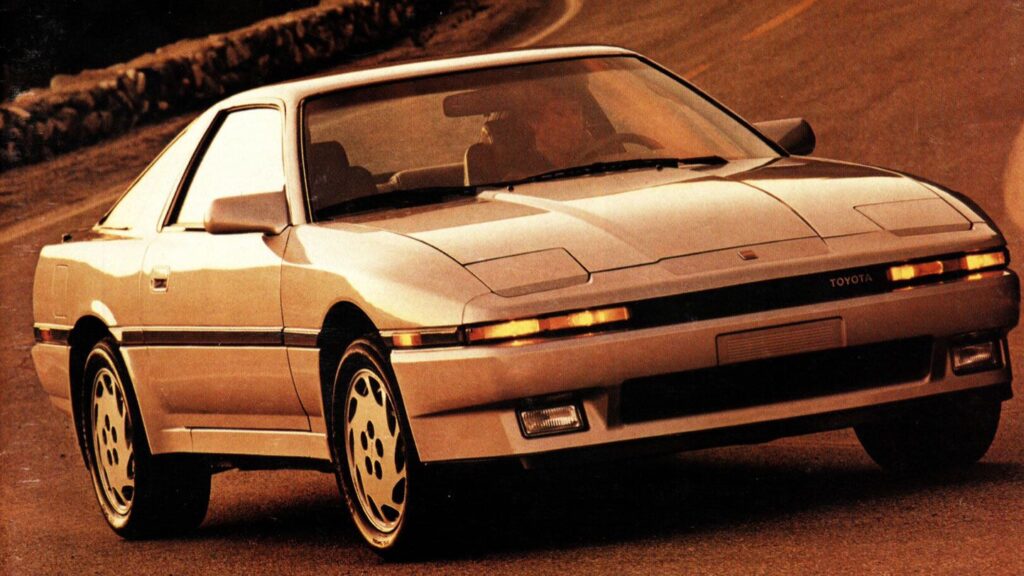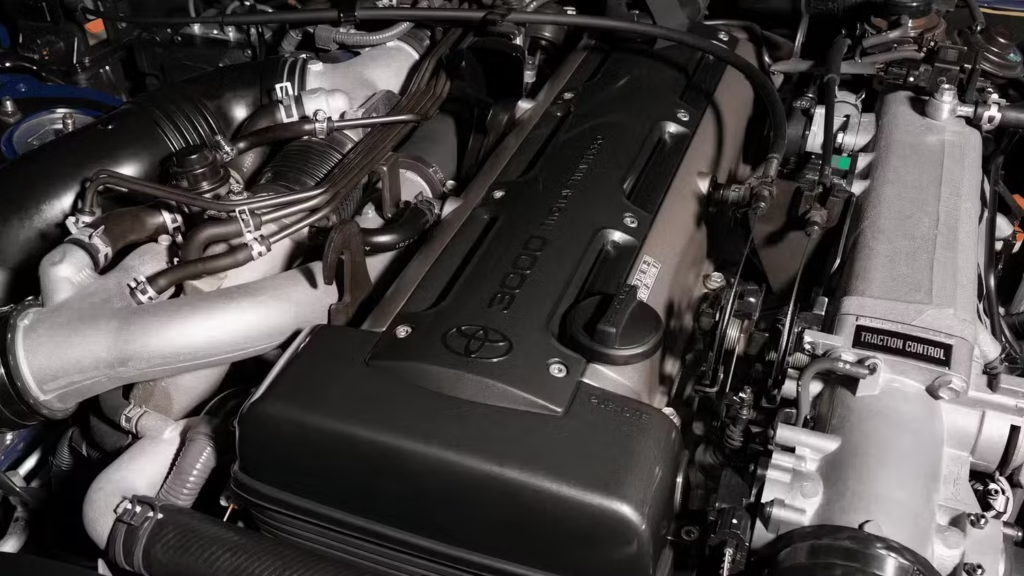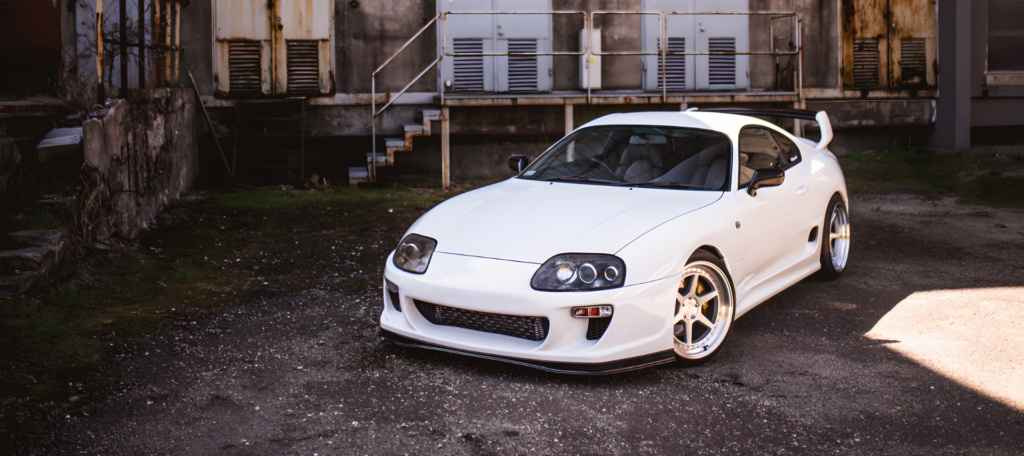Uncategorized
Toyota Supra MK4: The Unrivaled King of JDM Legends
Welcome to Mecvino Designs, where today we talk about one of Japan’s most iconic performance cars ever created—the Supra MK4!
This legendary machine comes equipped with the world-famous 2JZ-GTE inline-6 engine, a powerhouse that’s the stuff of car enthusiast dreams. With twin turbos delivering insane performance, it’s paired with a slick 6-speed manual transmission for ultimate control. The Supra MK4 can hit a top speed of 155 mph and rocket from 0 to 60 in under 5 seconds—leaving its rivals eating dust in pure style.
Supra MK4 History ?
The Toyota supra was unveiled at the 1993 Chicago Motor show under the guidance of chief engineer Isao Tsuzuki, and was designed to compete globally with sports car icons like the Nissan 300ZX and Mazda RX-7.
The Toyota Supra Development started in the early 1978’s introducing the Celica Supra (A40) which featured a longer wheelbase and a larger, inline-six engine, which set it apart from the standard Celica. Despite its improvements, the A40 struggled with identity. because its roots to the old and non sport car Celica platform which made it feel more like an upgraded Celica than a true sports car. so Toyota began focusing on developing a car that emphasized power and comfort, signaling the Supra’s potential as a standalone sports car.
1981 – Second-Generation Toyota Supra (A60)
This model of Toyota Supra refined the Celica Supra concept, featuring sharper styling, more powerful engine options, and advanced features for its time, like pop-up headlights and digital displays.

Problems with the A60 model
even with the improved and refined version it still shared too much DNA with the Celica, limiting its credibility as a standalone sports car.
1986 – Third-Generation Supra (A70)
The Supra finally broke away from the Celica lineup, becoming a standalone model. The A70 introduced turbocharged engine options, a rear-wheel-drive layout, and cutting-edge technology like electronic adjustable suspension.
Despite its advancements, the A70 was heavy, which affected its agility and overall performance. It also faced fierce competition from rivals like the Nissan 300ZX.
Toyota addressed performance issues by offering a turbocharged 3.0L inline-six engine, which improved power output. Advanced tech features like ABS and electronic suspension set it apart as a more sophisticated sports car.

1993 – Fourth-Generation Supra (A80)
The MK4 Supra was a revolutionary step forward, designed to compete globally with cars like the Nissan 300ZX, Mazda RX-7, and even European icons like the Porsche 911.
Key Improvements of Toyota Fourth-Generation Supra (A80)
- Weight Reduction: Toyota utilized aluminum for key components like the hood and suspension arms, significantly lowering the car’s weight.
- Aerodynamics: A sleek, modern design reduced drag and improved stability.
- Legendary Powertrain: The introduction of the 2JZ-GTE engine, a 3.0L twin-turbocharged inline-six, provided 276 hp (Japan-spec) to 320 hp (US-spec). It became famous for its durability and tunability, capable of handling over 1,000 hp with modifications.
- Enhanced Handling: The refined suspension and a functional rear spoiler improved cornering stability and grip.

Toyota Supra MK4 Specifications Under the Hood
The Toyota Supra MK4, produced from 1993 to 2002, is celebrated for its exceptional engineering and performance capabilities. Below is an overview of its key specifications:
Engine Specifications for the Toyota Supra MK4
The Toyota Supra MK4 is famous and known for its legendary 2JZ engine lineup . It comes with two engine options, each built for top-notch performance and reliability, tailored to suit different driving styles.
| Engine Variant | Displacement | Power Output | Torque | Features |
| 2JZ-GTE (Twin-Turbo) | 3.0 liters (2,997 cc) | 276 hp (Japan-Spec) / 320 hp (US-Spec) | 318 lb-ft (Japan-Spec) / 315 lb-ft (US-Spec) | Legendary durability, highly tunable, capable of handling over 1,000 hp with modifications. |
| 2JZ-GE (Naturally Aspirated) | 3.0 liters (2,997 cc) | 220 hp | 210 lb-ft | Reliable non-turbo option, ideal for balanced performance without forced induction. |

2JZ-GTE (Twin-Turbocharged Inline-Six):
This 3.0-liter twin-turbocharged inline-six engine is the flagship powerplant of the Supra MK4. In the Japanese market, it produces 276 horsepower and 318 lb-ft of torque, while the US-spec variant boosts the output to 320 horsepower and 315 lb-ft of torque. Renowned for its robustness and incredible tunability, the 2JZ-GTE can handle power levels exceeding 1,000 horsepower with the right modifications. Its twin sequential turbochargers ensure smooth power delivery and minimal lag, making it a favorite among performance enthusiasts and tuners alike.
2JZ-GE (Naturally Aspirated Inline-Six):
For those preferring a naturally aspirated engine, the 2JZ-GE offers a reliable alternative. This 3.0-liter inline-six engine delivers 220 horsepower and 210 lb-ft of torque. While it lacks the turbocharging of the 2JZ-GTE, the 2JZ-GE maintains the Supra’s reputation for smooth and balanced performance. It provides a more straightforward driving experience without the complexities of forced induction, making it ideal for drivers seeking dependable performance and longevity.
Legends of the Toyota Supra MK4
Smokey Nagata
When talking about Supra MK4, one name stands out Smokey Nagata, the mastermind and the artist of tuning sport cars. Known for his insane modification for the iconic and visually stunning gold supra mk4 which is Equipped with a high-performance 2JZ-GTE twin-turbo engine, this Supra boasted over 1,000 horsepower, making it capable of mind-blowing speeds. It’s not just about power, though— smokey Nagata’s attention to detail extended to every aspect of the car, from its aerodynamic improvements to its lightweight construction.
Engine Specifications: Power Beyond Limits
The heart of Smokey Nagata’s Supra is its powerful 2JZ-GTE twin-turbo engine. Here’s a breakdown of the engine and performance enhancements that helped make this Supra a beast:
| Specification | Details |
| Engine Type | 3.0L Inline-6, 2JZ-GTE twin-turbocharged |
| Horsepower | 1,000+ HP |
| Turbochargers | Custom twin-turbo setup |
| Fuel System | Upgraded fuel system for high-performance needs |
| Cooling | Upgraded intercooler and enhanced cooling system |
The Supra’s twin-turbo setup is a key part of its power, delivering over 1,000 horsepower with a custom fuel system and cooling upgrades to keep the engine running smoothly at high speeds.
Transmission & Performance Upgrades
To handle all that power, Nagata’s Supra is equipped with an upgraded Getrag 6-speed manual transmission. Other performance upgrades include:
- Reinforced rear differential for improved torque distribution
- Custom coilover suspension for better handling and stability
- Upgraded brakes with larger rotors for better stopping power
- Wide performance tires for maximum grip on the road
These upgrades ensure that the Supra can handle its immense power, whether on the street or the track.
Aerodynamics and Design: Sleek and Fast
No high-speed car is complete without aerodynamic enhancements, and the Gold Supra is no exception. Key features include:
- Custom lightweight body panels to reduce weight
- Aerodynamic spoilers such as a large rear wing and front splitter for better downforce
- Iconic gold paint job, making it one of the most visually striking Supra builds ever created
These modifications not only improve the car’s performance but also give it a unique, standout appearance that’s impossible to ignore.
Interior and Safety: Built for Speed
Inside, Smokey Nagata’s Supra is built for performance and safety:
- Racing bucket seats with harnesses for support during high-speed runs
- Roll cage for structural integrity
- Modified dashboard with performance gauges
The interior modifications ensure the driver stays safe and in control, no matter how extreme the performance gets.
Notable Achievements: Breaking Speed Records
One of the most famous feats of Smokey Nagata’s Supra was its Autobahn run, where it reached an incredible 222 mph. This moment solidified the Gold Supra’s place in automotive history and demonstrated just how far Smokey pushed the limits of speed and performance.
The Supra MK4: A Pillar of JDM Culture and Automotive Legend
When it comes to JDM (Japanese Domestic Market) culture, few cars stand out as much as the Toyota Supra MK4. From its iconic design to its relentless power, the MK4 Supra has captured the hearts of car enthusiasts around the world. For fans of JDM, this car isn’t just a vehicle—it’s a symbol of what Japanese engineering can achieve when pushed to the limit.

Toyota Supra Role in the JDM Community
JDM culture is all about passion for precision engineering, performance, and personalization. The Supra MK4 embodied these values perfectly. Its highly tunable 2JZ engine allowed owners to transform it into nearly anything they wanted—from street racers to drift machines, to outright monsters capable of hitting over 1,000 horsepower. The Supra’s ability to take modifications without sacrificing reliability made it the perfect choice for car builders in the JDM world.
Beyond performance, the Supra MK4 became a staple at car meets, races, and events, where fans gathered to admire the latest mods, compare setups, and push the limits of their builds. The Supra was, and still is, a representation of everything JDM culture celebrates: passion, creativity, and power.

